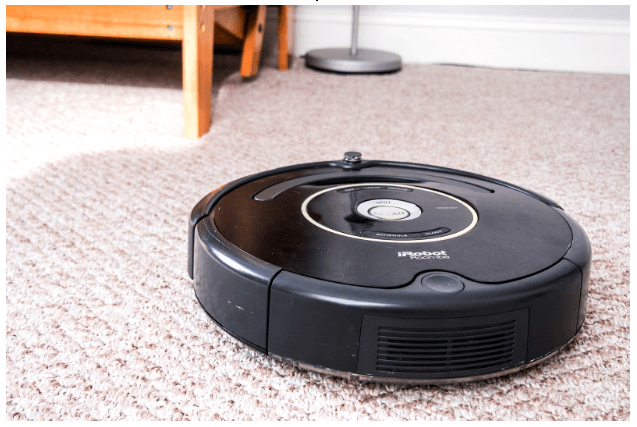How Long Do Robot Vacuums Last?
By: Matthew Byrd
“How long will your robot vacuum last?” is one of those questions that’s going to pop into your head at some point. Perhaps you should think about it before you buy a robot vacuum. Perhaps it crosses your mind when you take it out of the box. You’ve definitely thought about it the first time that your robot vacuum made a strange noise.
It’s normal to wonder how long certain products are going to last, but the question is especially important with Robot vacuums. Not only do you come to rely on them, but they’re a fairly new product. People are still wondering exactly how long they can rely on their robot vacuums.
The answer to that question is complicated, but here are a few basic things you need to know about how long your robot vacuum has before you’ve got to replace or repair it
On Average, You Should Get At Least 4 Years Out of Your Robot Vacuum
Here’s the good news. Most robot vacuums are going to last you at least 4 years on average. Depending on how much you paid for them, that means you should get quite a bit of daily usage out of one before it bites the dust (pun intended).
That number is based on reports from technicians and users, but it’s based on several different factors. Let’s take a look at some of those factors that influence how much longer your robot vacuum will last.
Older Robot Vacuum Cleaners Have Much Shorter Lifespans
You might have the opportunity to buy an older robot vacuum cleaner. We’d recommend against doing so if at all possible.
Early model robot vacuum cleaners (usually ones made before 2016 or around there) had notoriously shorter lifespans. While many of those are no longer available on the market, it’s best to avoid older, second-hand robot vacuums for the simple reason that technology has improved quite a bit during that time
Cheaper Vacuums Also May Not Last As Long
With some exceptions, robot vacuums are going to run you between about $150-$600 on average. Price is not always a good indication of quality, but you should expect cheaper vacuums to not last as long.
Does that mean you need to buy the most expensive vacuum on the market? That probably wouldn’t hurt if you’ve got the money for it, but that isn’t the point here. Rather, it’s best not to buy a vacuum just because it’s cheaper. Go with name brand models close to your price range that have good reviews.
You Will Have to Replace Certain Parts From Time to Time
The overall lifespan of your robot vacuum can be a bit of a misleading number. Basically, it is the countdown to when parts you can’t easily repair or replace will eventually fail.
Until then, there are quite a few parts you can relatively easily take care of. Those include the battery, brushes, and filters. Your battery is probably going to have to be replaced every couple of years (maybe sooner). Brushes should be replaced twice a year for optimal usage. Filters are tricky, but you’re probably looking at replacing them 2-3 times a year. It’s honestly often fine to replace filters every time you replace brushes unless you have a need to do it more often.
When it comes to batteries, be sure to consider replacing them when you notice the performance of your vacuum starts to drop. Even then, you want to replace them with manufacturer-recommended batteries in order to ensure they are running at full capacity.
Maintaining your robot vacuum isn’t just about replacing parts, though. That brings us to our next point.
Clean Your Robot Vacuum Often and Thoroughly To Ensure a Long Life
When we talk about cleaning your robot vacuum, we’re mostly talking about cleaning the brushes and filters.
Filters are easy enough to clean. Depending on the model, you can usually just open a hatch and “knock out” the dust and debris. It wouldn’t hurt to check the filter after every cleaning or so based on how much work the vacuum had to do.
Brushes are a little more difficult. If you’re just using your vacuum to clean up the normal amount of dust and everything else, then you can probably get away with using gloves or minor tools to clear the debris out of brushes once in a while. It’s not a big deal.
Where things get complicated is if you have pets. Even if your vacuum is cleaning up just a little pet hair, a little pet hair can clump on your brushes fairly easily. Once that happens, properly cleaning it can be tricky. Some people find it easier to buy new brushes.
If you clean pet hair regularly, it shouldn’t be a problem. If things get really bad, then you could start to cut the hair out, but you risk ruining your brushes in the process. It might just be better to replace them at that point.
It’s Possible For Your Robot Vacuum to Last Close to 10 Years
With the right maintenance and a little early research, it’s possible to have your robot vacuum last for a long time. How long? It’s hard to tell since more reliable robot vacuums are still a fairly new invention. However, it’s theoretically possible to get almost 10 years of service out of your robot vacuum if you’re a cautious owner. While you may choose to replace it before then, the point is that you shouldn’t worry about your robot vacuum dying early if you take care of it.
Resources – Them Vacuums, Washington Post, USA Today




